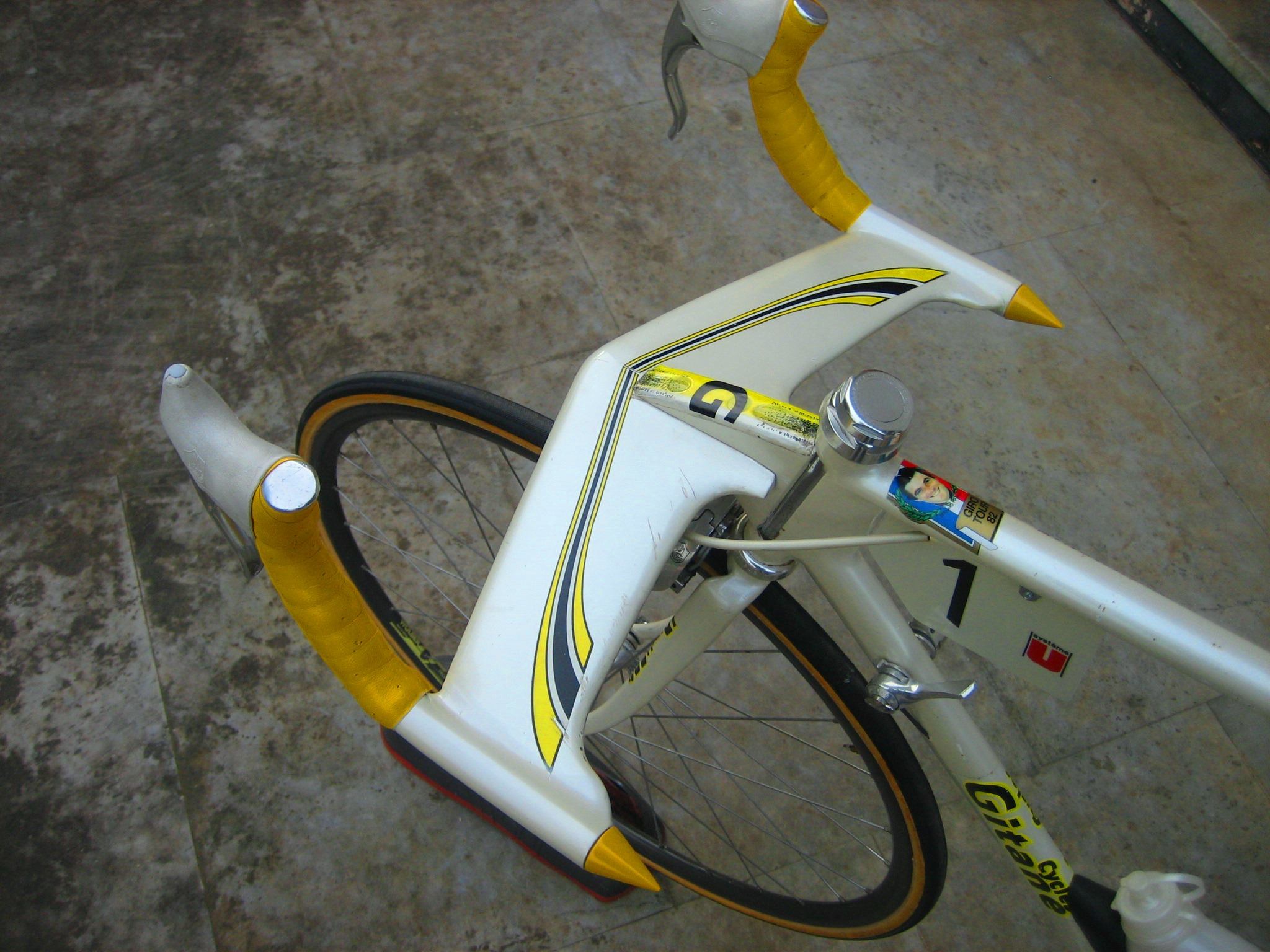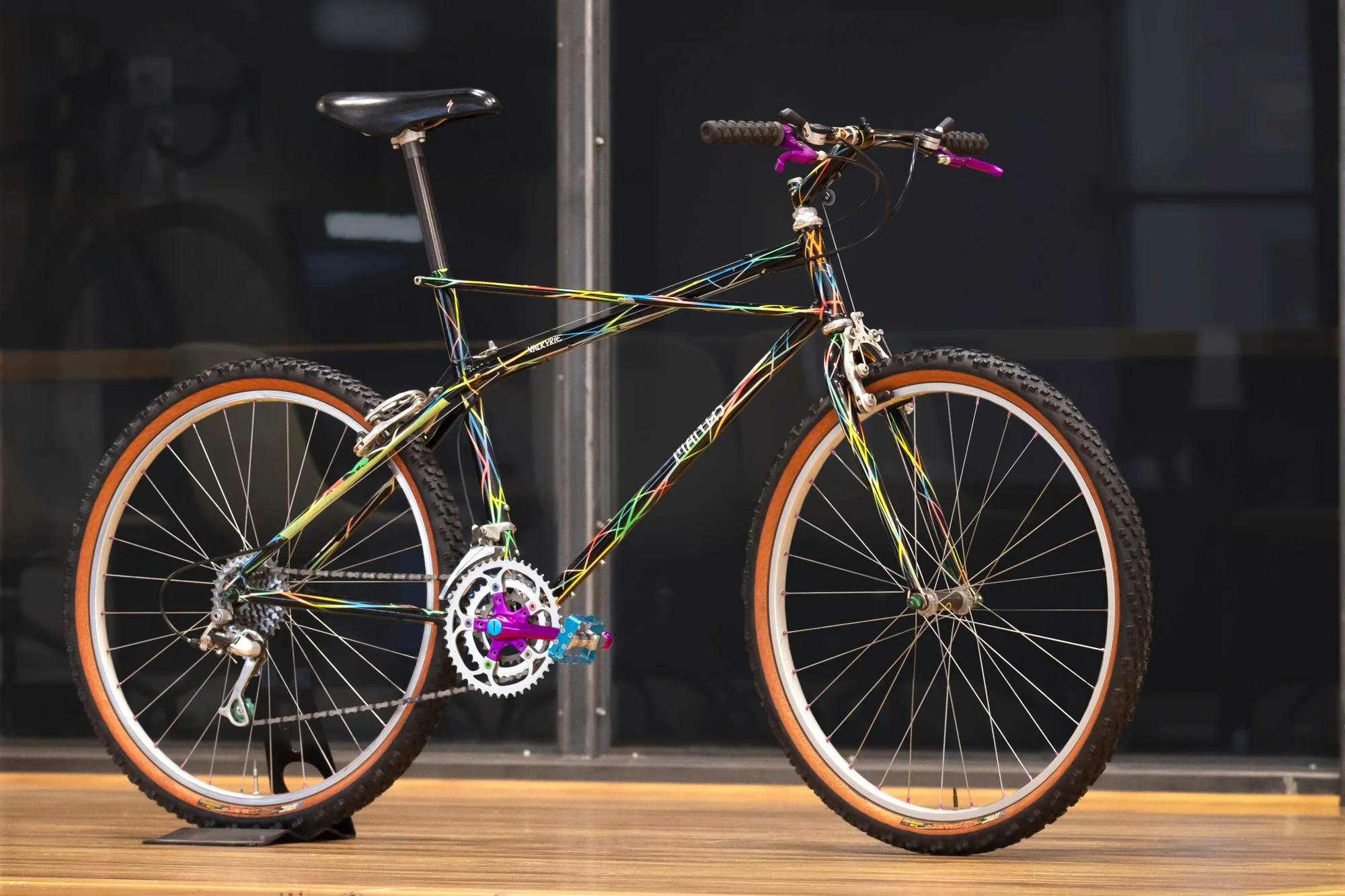Great bike companies don’t die, they just stop making bikes. They live on in our memories, enhanced by the sweaty-palmed, breath-shortening visions of epic rides, fast descents, and endless climbs. Not to mention the legendary riders who used to fly the flag for these brands — they were our childhood heroes and remain the benchmarks for any young pro.
But a lot of bike companies didn’t cut it. So what’s the difference between one that’s forgettable and a true legend of cycling?
My criteria are simple: A legendary bike brand must have contributed to a significant change in bike design and technology, and ideally, some hall-of-fame-caliber pros rode its bikes back in the day.
So here are five legendary brands that I want to see make a comeback, plus a special bonus round at the end.
Schwinn: America’s original bike
I know Schwinn still makes bikes, but now they’re sold at Wal-Mart and Target, so as you’d expect for that customer base, today’s Schwinn’s aren’t your grandaddy’s bikes. There aren’t any World Cup mountain bikers or pro roadies riding Schwinns anymore, and that bums me out.
Going back to the heyday of six-day track racing in the 1930s, Scwhinn’s Paramount was the bike of choice for competitive American cyclists. That was partly due to availability, but also Schwinn’s legendary made-in-America craftsmanship. Even into the ‘80s, Paramounts were worthy race bikes — just ask Olympian Alan McCormack. His Paramount was on the cutting edge with its aggressive geometry and oversized tubes that Schwinn pioneered in 1987. The 1 ¼” down tube and flared seat tube helped stiffen the bottom bracket area.
McCormack's Schwinn Paramount race bike.
Also, Schwinn was unwittingly part of the birth of mountain biking. In the late ‘70s, riders in California’s Bay Area modified its fat-tired cruiser bikers to create “klunkers” that were capable of riding off-road. Later, Schwinn became a player in pro mountain bike racing, sponsoring Ned Overend, the late Steve Tilford, and Elke Brutsaert, among many others. Plus, anyone who followed mountain biking in the ‘90s will remember those stunning bass boat paint jobs.

The revolutionary Gitane Delta time trial bike. Photo courtesy GitaneUSA.
Gitane: The pride of France
A bit like the French analog to Schwinn, Gitane’s history goes way back to the early 20th century and was rich with racing pedigree. It shined in the late-’70s and early ‘80s when the great Bernard Hinault won four of his five Tour de France yellow jerseys on Gitane bicycles. But then it declined amid ownership changes, eventually landing in the portfolio of a Swedish conglomerate. Gitane is now a shadow of its former self, selling primarily e-bikes and townies, nothing that would suit “The Badger.”
In the early ‘60s, Jacques Anquetil helped propel Gitane to prominence as the first rider to win five Tours de France, among his many other achievements. However, Gitane’s greatest technological achievements came about 20 years later.
Gitane used Renault's wind tunnel to design an aluminum handlebar that would cheat the wind. Photo courtesy GitaneUSA.
That leap forward in design and development coincided with Renault’s acquisition of Gitane in 1976 and the technological resources afforded by France’s largest auto manufacturer. Gitane focused its efforts on aerodynamics and was arguably the first company to use a wind tunnel to design bikes. This work began with in 1979 with the Profil model, which used aerodynamically shaped steel tubes. This was the precursor to the striking Delta time trial bike. Unveiled in 1984, the Delta employed an innovative handlebar that was integrated into the frame’s head tube and wing-shaped for aerodynamics. Later, Gitane would design the Delta with a smaller 650c front wheel to further improve aerodynamics, especially in team time trials, as this allowed the Renault-Gitane riders to position themselves even closer in the draft.
Beyond aerodynamics, Gitane also was one of the first companies to build bikes with carbon fiber. In the mid-’70s, it worked with California-based Composites Development Corporation to build a frame that’s rumored to have been ridden by Lucien van Impe in the 1976 Tour de France.
Karpiel: The bikes Bender couldn’t break
And now for something completely different … Fast-forward from the halcyon days of French road cycling to the dawn of the new millennium and the revolution that was freeride mountain biking.
Few, if any, bike companies could make something that was up to the task of the massive hucks and big-mountain terrain that riders like Josh Bender and Chris “Krispy” Baughmann were riding. Then Karpiel came along and delivered a bike that was just as extreme as its riders: the Apocalypse. Bender rode the 13-inch-travel freeride bike with a 12” Marzocchi Monster-T fork, 24” wheels, 3” Nokian tires, and a secondary rear shock to massive drop-offs like the legendary 41-footer he launched at Deer Valley in 2000.
Many icons of the early 2000s freeriding piloted Karpiels off of enormous drop-offs for films like Kranked and New World Disorder. And a bike of this stature was essentially mandatory equipment at the first editions of the now-famous Red Bull Rampage freeride competition.
There have been rumors of a Karpiel comeback, but so far, we’ve yet to see the second coming of Apocalypse.
Maverick: Enduro innovators
You might not remember any world-beating pro riders who rode Maverick bikes, but this Boulder, Colorado-based company was way ahead of the pack when it came to technology we now consider standard on today’s enduro mountain bikes.
Those exotic Karpiel freeride bikes? They were extremely heavy, and in that era, you’d be hard-pressed to find any long-travel suspension bike that didn’t tip the scales near 40 pounds. Founded in 1999 by RockShox founder Paul Turner and Frank Vogel, Maverick came along and built full-suspension bikes with lots of travel at a fraction of the weight. For example, the ML8 was a 165mm bike that weighed just a shade over 30 pounds. And with its Monolink suspension, it pedaled pretty darn well compared to the basic single-pivot designs of the time.
Maverick made its own suspension forks and integrated rear shocks, which helped shave grams and optimize performance. Also in the department of sliding hydraulics, it popularized dropper posts with its Speedball seatpost. While Gravity Dropper may have been first on the scene with it’s height-adjustable post, Maverick’s Speedball helped make droppers mandatory equipment in the short-lived Super-D racing discipline, which was the forerunner to enduro.

Three letters, one badass bottom bracket standard that's still the best 100 years on.
BSA: The BB kings
This entry on the list is a bit theoretical, but hear me out. I really don’t know much about BSA’s bikes — they came and went before most humans had telephones. They produced some pretty cool motorcycles too. But above all Birmingham Small Arms (yep, that name is awesome in a “Peaky Blinders” way) devised the BSA bottom bracket standard. To this day, it’s the most reliable and universal way to attach a set of crank bearings to a bike frame. I love BSA in all of its creak-free glory. We’ve seen other firearms manufacturers like Orbea and BH achieve huge success in modern cycling. It would be cool to see what a British version could achieve.
Trek's graveyard of awesome brands
Now it’s time for the lightning bonus round! Trek bikes are great and all, but I really do miss these legendary brands that were bought by the Wisconsin-based bike behemoth and have since been “sunsetted” in favor of a unified corporate identity.
Gary Fisher: Named after one of the fathers of the sport, one of mountain biking’s first Olympic gold medals was won on a Gary Fisher by the iconic Paola Pezzo. Plus, Gary Fisher pioneered 29er wheels and introduced the world to the concept of long reach and short stems with its Genesis Geometry.
Tinker's Team Storm was stunning as only a vintage Klein could be.
Klein: Not many mountain bikers are known by a single name, but Tinker is one of them. He rode a Team Storm in 1993 that embodied everything that made Klein such a revolutionary bike company. The aluminum tubes were massive and thin-walled. The Mission Control stem/handlebar integrated neatly with the oversized headset. The paint was jaw-dropping.
Bontrager: Although Keith Bontrager’s steel mountain bike frames were elegantly crafted, some of his most notable innovations were components. He created the first lightweight alloy mountain bike rim in the early ‘80s by modifying a Mavic MA-2 road rim. A few years later, Bontrager introduced the Switchblade fork, which had an aluminum crown that bolted to the legs. RockShox later adapted that crown to use on its revolutionary RS-1 fork. You’ll still see Bontrager’s name on components (usually on Trek bikes), but I want them to create a modern-day Race Lite, paw-print logo and all.
LeMond: Yes, the LeMond brand has made a comeback with sleek townie e-bikes, but come on, that’s not true to the brand’s namesake. Sure, LeMond bikes were never wildly innovative, but the name alone deserves to be back on a proper road racing bicycle.
Drop us a line in the comments if you can think of other legendary bike brands that deserve to be on this list!













